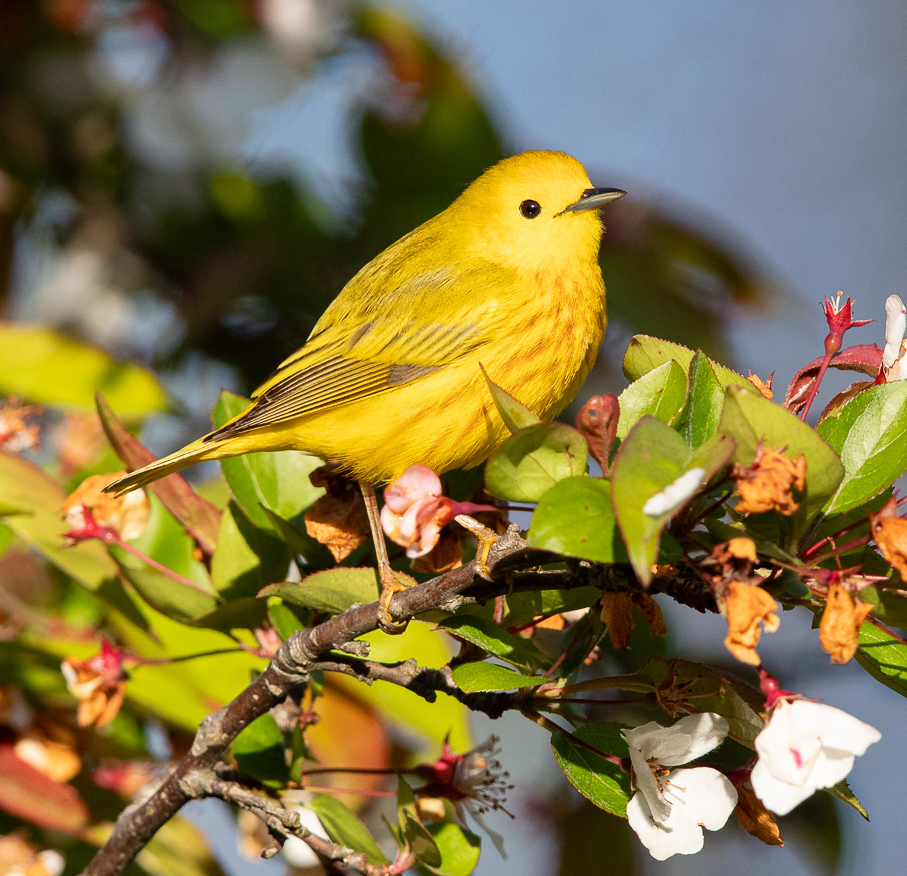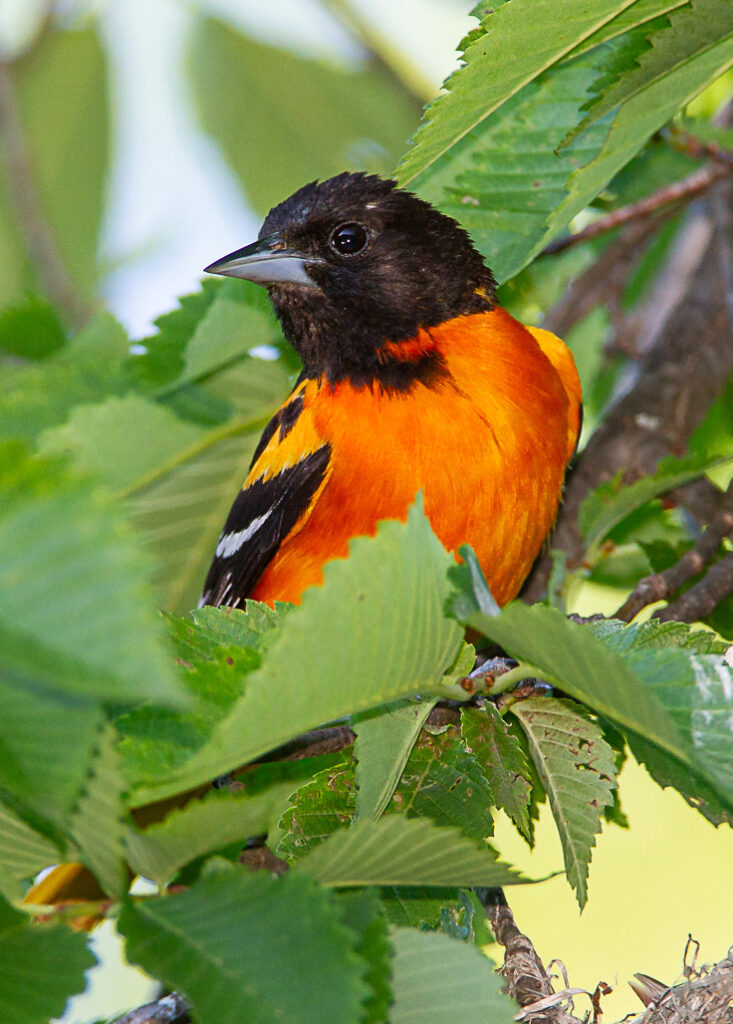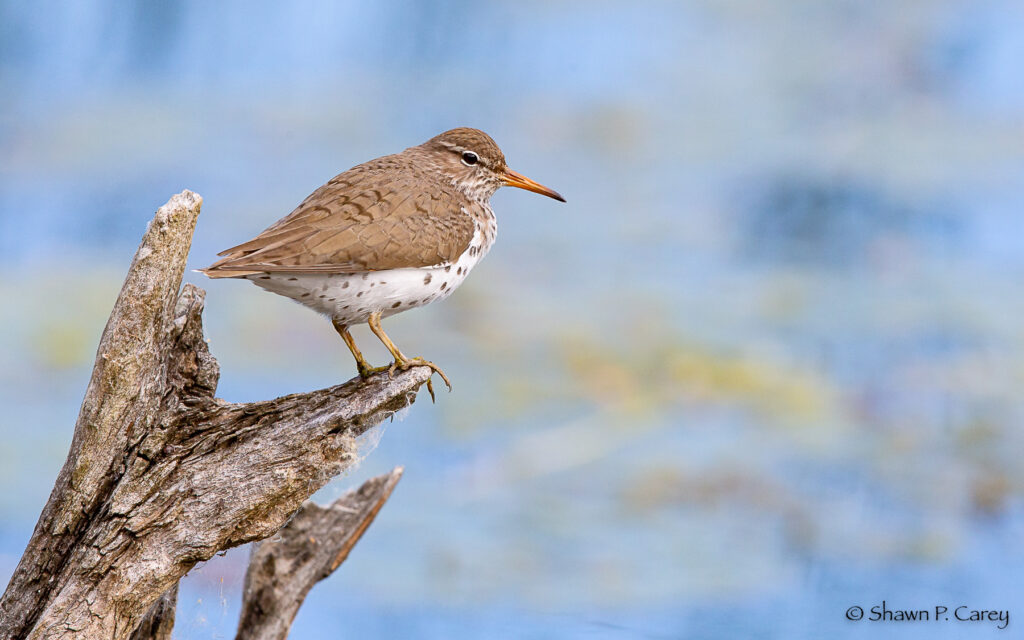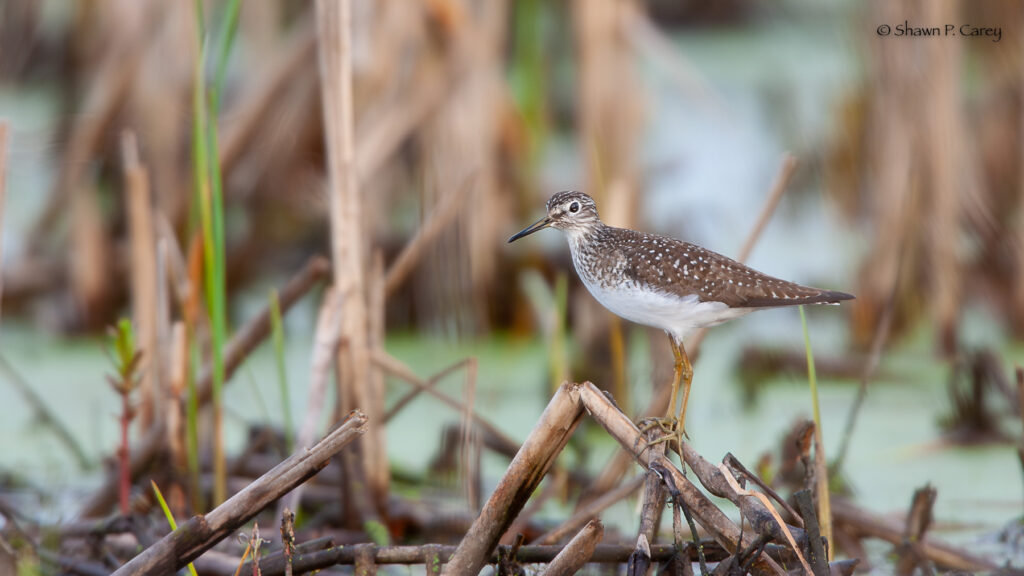By Fred Bouchard
Most of us try to cozy up to Mother Nature now that we’re increasingly climate-conscious, especially during longer days and presumably carefree hours of summer. Whether you’re in the garden, open spaces, or on woodsy walks, our home town offers a variety of eco-friendly locales to commune with Ma Nature’s little winged ambassadors.
I offer four likely places, each hosting two not-obvious, strictly seasonal denizens that you might readily identify with your attentive ear and sharpened eye. We go from high altitude to low, and throw in an easily overlooked hotspot in nearby Cambridge.
A good guide book (Sibley, Peterson, or National Geographic) or your favorite app and binoculars will prove reliable back-up or stand-ins for seasoned bird-watching friends. Early morning beats late afternoon for bird-spotting; midday, when birds tend to nap, lags far behind. Wear brimmed caps, apply sunscreen, skip the shades. The Merlin app works, but fallibly: trust, but verify. Check out Cornell University’s brilliant website eBird for matters of avian location, recording, and identification.
Habitat Wildlife Sanctuary: Warblers
The Habitat Massachusetts Audubon Wildlife Sanctuary is a 88-acre haven knifed between Concord Avenue and Prospect Street. It hosts woodland wanderers year round, and spring migrant birds and kids’ events in warmer months. Two warblers that eschew heading much farther north, unlike most of their 25 New England pass-through brethren, are the shy, pine-topping Pine Warbler and the gregarious, deciduous-favoring Yellow Warbler.
Pine Warblers, despite lemony breasts, chartreuse backs, and pairs of white wing bars, seldom give you eye-level looks. You can hear them softly trilling in the upper canopy of Habitat’s many white pines and may, with diligence, earn a peek.
Yellow Warblers approach closer, sing louder (“sweet, sweet, I’m so sweeet!”), sport custard- yellow plumage, the males adding jazzy orange pinstripes. They may nest near eye-level in orchards, gardens, or damp locales, and are on the go early and late. Both species tend to fade, in song and plumage, as the summer wears on. Pine Warblers mostly winter in the Caribbean with a few lingering as far north as Cape Cod. Yellow Warblers winter between Mexico and Peru.
Rock Meadow: Blackbirds and Orioles
Off Mill Street, near its junction with Concord Avenue and opposite Lone Tree Hill, Rock Meadow welcomes summer avian residents to varied habitats within its 70-acre parcel of the Western Greenway. In its vaunted Victory Gardens you may spy a whizzing Ruby-throated Hummingbird, in its open fields crepuscular American Woodcocks in diving flight songs at deep dusk, and along its forested edges, flashy Northern Flickers.
Red-winged Blackbird males “check!” frequently and sing gurgly “conk-a-lee!”; they’re quick to chase intruders from their marshy cattail lairs, jet-black bullets flexing their expandable vermilion epaulets. Blackbirds are emblematic of sexual dimorphism, i.e., you’d think the females another species: they are smaller and sepia-streaked with a dusting of facial beige. They are nearly equally aggressive in chasing threatening crows, grackles, and hawks.
Up in the trees live their glamorous Icterid (New World blackbird) cousins: the beautiful and tuneful Baltimore Orioles. Males are strikingly orange-bodied with black heads and cowls; yellowish females lack black on top, but both have black wings with two white wing-bars. Males’ elegant spring songs vary individually and carry afar (one sang his signature bluesy song three years running at Brookline’s Hall’s Pond); females contribute complementary vocalizations. Lure them to platform feeders with cut-up fruit. While orioles fade away quietly in September, blackbirds may convene in large wandering flocks mixed with cowbirds and grackles (fellow Icterids) and persist through early winter.
Clay Pit Pond: Swifts and Vireos
Fast-flying swifts, affectionately known as “cigars with wings”—blunt Dutch cigars, not lengthy coronas—lack legs but use tiny claws to nest and roost along the inner walls of chimneys and steeples. The lone members of the Apodidae (“foot-less”) family found east of the Mississippi, these aerial specialists’ wings are long, stiff, tapered, a bit decurved: built for speed.
Swifts’ rapid flittering and high-pitched chittering are unmistakable as they course individually or in small flocks over open water and town centers, decimating local airborne insect populations. Along the pond’s edge below them you may catch the amiable, aimless noodling of Warbling Vireos. These plainest of plain-jane vireos (gray over white, small white eye-line, bare eye, dark bill) hide out in deciduous trees and shrubs as they feast on bug and bud, and sing decreasingly as summer progresses. Both birds fly south by mid-September to winter in South America.
Blair Pond: Sandpipers
A stone’s throw behind Comella’s off Brighton Street, Blair Pond hugs the commuter rail tracks and bike path, straddles flows into Alewife Brook, and links via a modest woods to an industrial park. Its shallow depth and mudflats attract herons, nesting waterfowl, shorebirds, and kids fishing for carp. In spring and fall, several species may stop by: Green Herons, Killdeer, Soras, Least Sandpipers, even a Glossy Ibis or American Bittern.
Two related sandpiper species among regular visitors are the Spotted and Solitary. They’re just passing through; if you’re lucky enough to spy them side by side at 15 yards from either green bench, the lanky Solitary has longer olive legs, dark bill, and eye-ring; Spotty is squattier, with shorter tawny legs, orange base of the bill, more spots, an eye-line, and the clincher—it regularly bobs its tail. Larger females foist incubation and chick care onto males; both sexes lose their spots after breeding season.
Shortlisted autumn poster-chicks
Everyman’s Backyard
Northern Cardinal, White-throated Sparrow
Rock Meadow (gardens)
American Goldfinch, White-breasted Nuthatch
Beaver Brook (Middle, waterfall area)
Red-bellied Woodpecker, Red-tailed Hawk
Little Pond
Belted Kingfisher, Hooded Merganser
Claypit Pond
Common Merganser, Great Blue Heron
Habitat MAWS
Eastern Bluebird, Wood Duck
Fred Bouchard is a member of the Belmont Citizens Forum Newsletter Committee.






Sorry, the comment form is closed at this time.